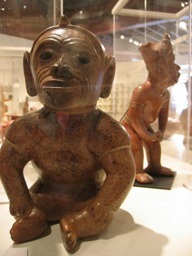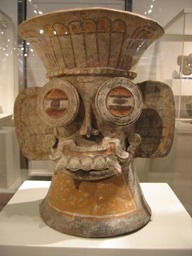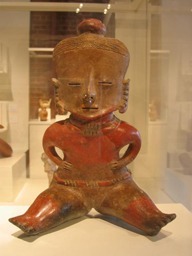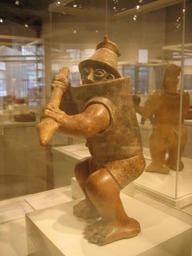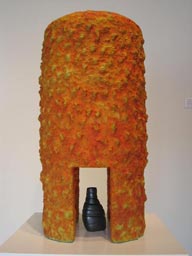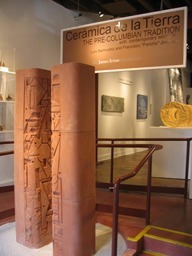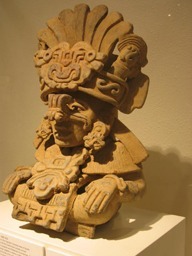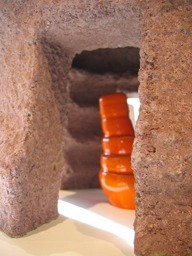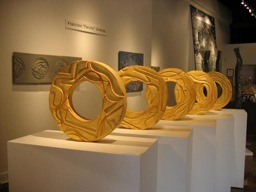The Pre-Columbian Tradition with contemporary works by Luis Bermudez and Francisco “Pancho” Jiménez
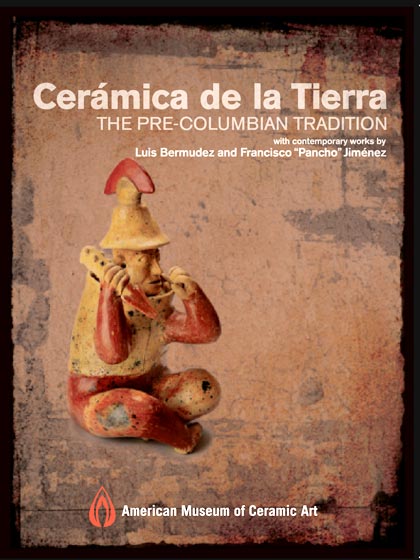
February 28–May 9, 2009
Cerámica de la Tierra, presented by the American Museum of Ceramic Art, examines Mesoamerican and South American ceramics coupled with a glimpse of contemporary ceramic expressions rooted in pre-Columbian traditions. This exhibition, supported by the James Irvine Foundation, will unveil a large, rarely-seen private collection of pre-Columbian works, replete with examples of ceramic tomb sculptures, wind instruments, and vessels. Ranging from 1200 BC to 1600 AD, these antiquities represent the Maya culture in West Mexico (Jalisco, Colima, and Nayarit, Vera Cruz), Teotihuacán, and northern Peru. To place these cultures in their anthropological and historical context, key facts and information accompany the displayed items.
Connected only by trade routes, various ancient societies existed in semi-isolation within Central and South America for approximately 4,000 years. Much of what is known of these ancient societies is based on theory and speculation. However, this exhibition will draw attention to the common denominators and shared features that played across the region, including the ball game, human sacrifice, rituals, astrological views, and religious and social systems. Of particular interest is the transformative nature or duality of the works, exemplified by mirrored or reflective images, and figures that morph from one form to another. Attention will also be given to the function of vessels, to the subject matter of figurative sculptures, to the clay construction and firing techniques, and to the aesthetic qualities of the works.
As a way to measure Mesoamerican influences in contemporary art, works created by two California Mexican American artists, Luis Bermudez and Francisco “Pancho” Jiménez, both working in the ceramic medium, are juxtaposed against the pre-Columbian work from Mexico and Peru. Given AMOCA’s broad interest in ceramics from all over the world and from all time periods, programs such as Cerámica de la Tierra are fundamental to our museum’s mandate to encourage comparison, evaluation, and appreciation of the diversity of human creativity.
